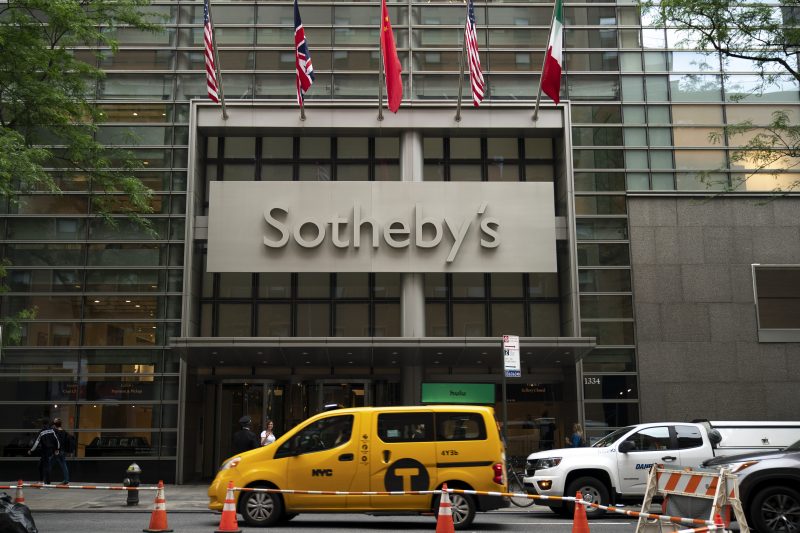Sotheby’s, grand old lady of auction houses, eclipsed by Christie’s
Sotheby’s headquarters on the Upper East Side in Manhattan: the famed auction house is being purchased by telecoms magnate Patrick Drahi for $3.7 billion (Drew Angerer)
New York (AFP) – Long a giant in the competitive world of auction houses, Sotheby’s once led the glamorous field of fine arts sales, but in recent years has seen rival Christie’s steal its thunder.
Snapped up by French business magnate Patrick Drahi in a $3.7 billion deal announced Monday, Sotheby’s was founded in 1744 by British entrepreneur Samuel Baker and focused exclusively on book sales before expanding into other fields at the end of the 19th century.
That diversification was dramatically accelerated in 1917, when it moved from its base in London’s publishing hub on the Strand to set up shop in Mayfair, the British capital’s center of the arts.
Sotheby’s expanded even further afield and opened its New York branch in 1955, three years before Peter Wilson began a 22-year tenure leading the auction house.
As the auction world’s dominant player, it bought up the leading US fine art auctioneer Parke-Bernet in 1964, which gave it an entry into New York high society.
Wilson was quick to understand the power of turning Sotheby’s auctions into major social events, attracting movie and pop stars and breaking with traditional British discretion.
A key turning point was the 1958 sale of the Goldschmidt collection in London, a black-tie celebrity event attended by such luminaries as Kirk Douglas, Anthony Quinn, W. Somerset Maugham and Dame Margot Fonteyn.
As the first auction house to become a truly international enterprise, Sotheby’s was organizing sales in Hong Kong by 1973, Russia in 1988 and India in 1992.
To boost its profile, it was floated on the London Stock Exchange in 1977 before being bought up in 1983 by US businessman Alfred Taubman, under whose tutelage it became a US company.
– Back in pole position –
The son of Jewish immigrants from Poland who had built his fortune in shopping malls, Taubman gave the venerable establishment the make-over it needed as Christie’s threatened to eclipse its luster.
He offered new services to collectors, including storage, insurance and financing, before returning Sotheby’s to the stock exchange in 1988.
That put Sotheby’s back in pole position ahead of Christie’s, but only for a while: by the 1990s, its rival was regularly topping it in terms of total sales.
Then in 1997, the 200-year-old establishment was rocked by a scandal when US authorities revealed that it had colluded with Christie’s to fix prices and swindle customers out of millions.
Taubman was sentenced to a year in jail, a piece of publicity Sotheby’s could have done without. The scandal also brought down Sotheby’s CEO Diana Brooks, at the time considered to be the most powerful woman in the art world.
At the start of the 2010s, Christie’s pulled ahead of Sotheby’s, bolstered by savvy marketing and promotion, including the historic sale of “Salvator Mundi” in 2017, and of the Rockefeller collection last year.
In the high-stakes world of attracting collectors and securing sales of major collections, Christie’s is now regularly in the lead, clocking up $7 billion in sales in 2018 against $5.2 billion for Sotheby’s.
The previous year Christie’s racked up $6.6 billion, compared with $4.5 billion for Sotheby’s.
Disclaimer: Validity of the above story is for 7 Days from original date of publishing. Source: AFP.


